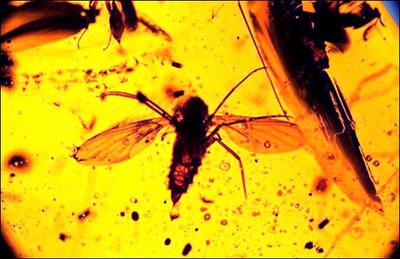I first heard of Stan Brakhage as if he were an urban myth or some kind of artistic rumor: some guy had supposedly taped thousands of mothwings – real mothwings – onto a reel of celluloid and released it as a “film.” Thousands of mothwings, with light projected through them, flickering.
Turns out, of course, it was true, and the film is called Mothlight.
Having been reminded of this by the preceding BLDGBLOG post – which has some ridiculously beautiful images of cyanobacteria – here’s a quick glimpse.





[Images: Stills from Stan Brakhage, Mothlight (1963)].
Brakhage taped actual pieces of animals and plants to a reel of celluloid! You’re watching shadows of an actual landscape, in cross-section – core samples – projected onto a screen like any other cinematic experience. Landscape as cinema.
It’s too bad you can’t do something like this with bedrock, I have to say – but you could make an entire film out of fossilized amber, for instance…

Anyway, you can watch Mothlight on DVD. (Which, of course, eliminates the fun of the actual mothwings – but no matter).
I’m starting to think there are many, many people all collectively working as “Geoff.” Or, just an empathetic robot …
I went to see some of Brakgage’s films at the Cultural Center in Chicago years ago, having heard about him in a similar vein to your description. The films were bound to fail living up to their mythology, but I left there pretty damn amazed.
During the screenings (maybe 10-15 in all), the lack of sound was just as strange as the films themselves. Given that he didn’t want sound to influence the visual rhythms, it made sense, but it also made me more aware of the theater’s white noise, the projector’s whirr and some guy moving his arm 1 inch and his leather jacket squeaking. It was like I had dog ears.
But since I’ve received the DVD as a gift, I’ve tried watching his films with music. Sometimes that detracts, but other times it seems to click, like the film allows so many aural accompaniements that the brain connects the two, like they were intended to be together. For example, with one of his painted films, the intensity increases over its ten minutes. I just so happened to have Philip Glass’s Koyannisquatsi on at the same time, the part where the repetition gets more and more hectic. The two interacted so well it was amazing, like Pink Floyd and Wizard of Oz (though I’ve never actually tried out that “myth”).
His films take patience, though I feel like I should set aside time and watch them more often.
You may also enjoy Sebald’s passage on moths in his Austerlitz.
Ah, Brakhage.
Got to study his work at university. His expirementation with film is legendary in the field. He lived a reclusive lifestyle and among his many experimentations, he would take strips of film and urinate on them, just to see what happens. He took filmic experimentation and made it something extremely tangible.
I’ve had the distinct pleasure of seeing some of his work screened off actual 16mm prints. Nothing quite like watching “The Act of Seeing With One’s Own Eyes” (autopsy) at 9AM on a hungover Monday morning.
And Mothlight is a truly hypnotic viewing experience. Organic film…
I saw ‘Mothlight’ on film, pretty amazing…
Tho they did project it backwards by mistake!
I’m ashamed to admit I didn’t notice until the title came up at the end upside-down! 🙂
Although it indeed my moth wings etc taped to film, I don’t believe it was ever projected this way, I imagine that was used to contact-print a negative from which prints for projection were made.
Interesting in such films to notice how much info your eyes/brain seem to take it… ie that detail of individual totally different frames can be noticed..
‘indeed was by taping moth wings etc to film’ is what i ment….
Geist – Where’s that moth quote in Austerlitz? I’ll look for it meanwhile.
Also, check out Bedrock: The Film, as posted by one of my several robot-clones. Something to make next weekend perhaps. Next up: films using genetic sequences. Biotic cinema. Doesn’t Wm. Burroughs have something about that…?
Third time lucky: “indeed was MADE by”!
Geoff,
in the English edition the “moth” passage is from page 127-134 (paperback penguin).
I see the book is at the top of your reading list. I’ve been re-reading it (again) this past few days.
It’s an amazing book, and I consistently rank it very high in my top ten – which is all the more funny because I don’t remember the moths! I have the British copy, but I’ll look round in the 127-134 environs and see if I can’t find it. So you like Sebald? Rings of Saturn? How about “Ambros Adelwarth” in The Emigrants?
Just found the moths – and for some reason – I’m clearly on top form today – I was thinking you meant the US edition (don’t ask). It is indeed on p. 127…